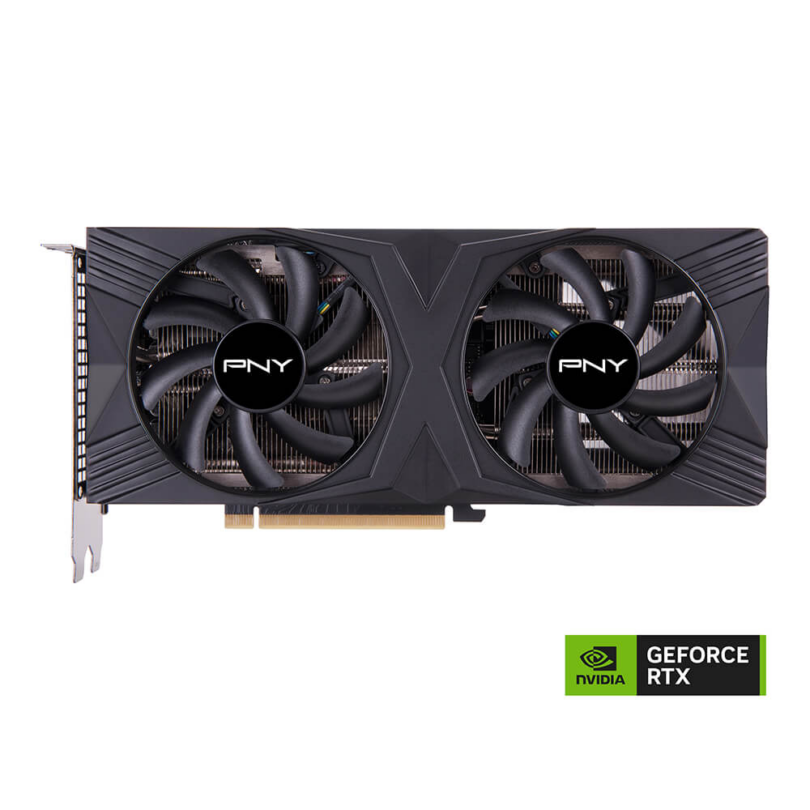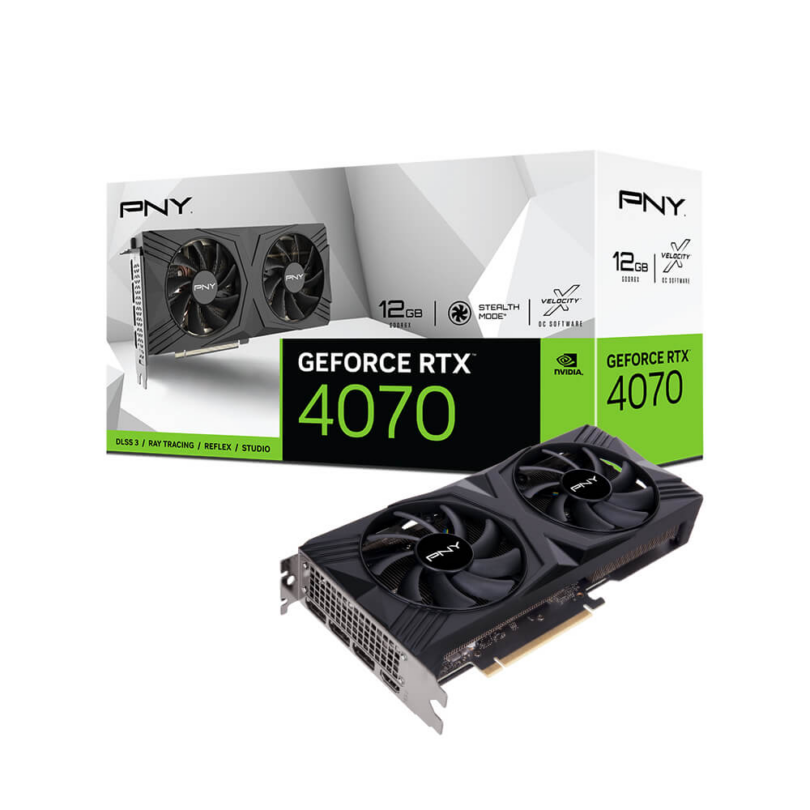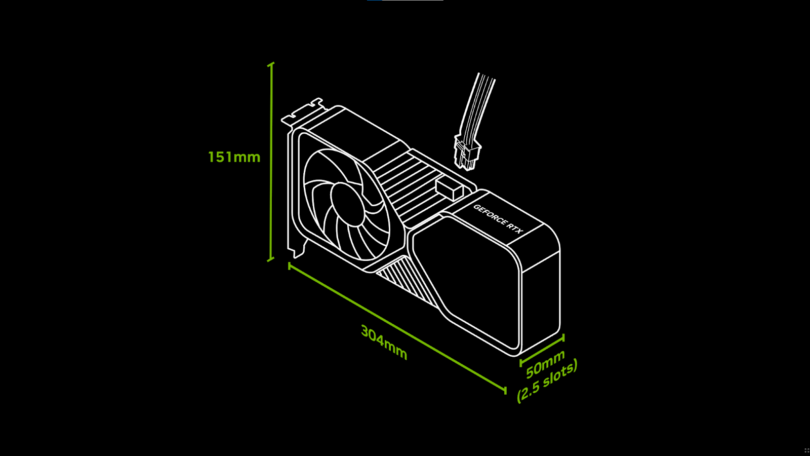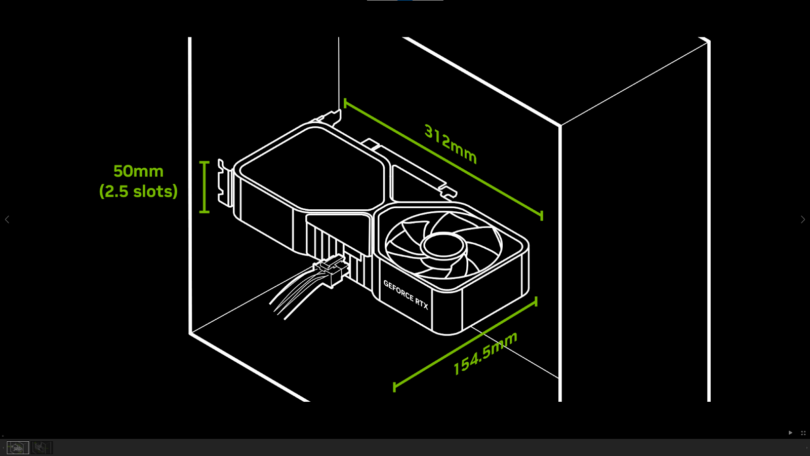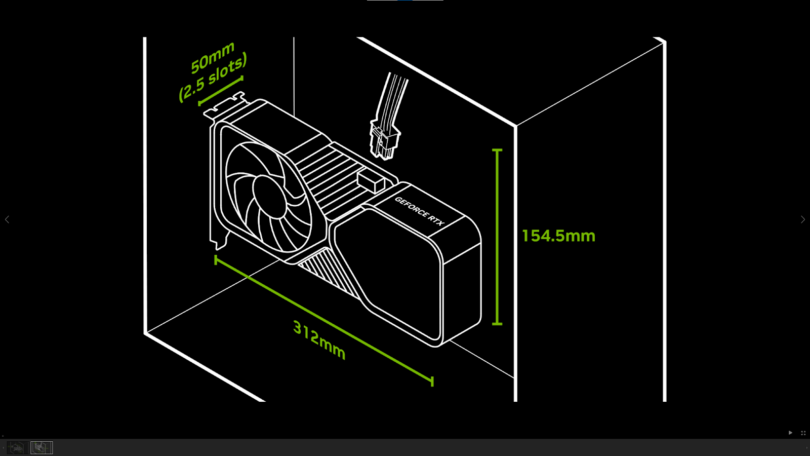This guest editorial has been written by forum member and vendor SaperPL!
All opinions in this article are that of the author, and not necessarily those of SFF Network or the team.
NVIDIA – the Stormtroopers of SFF problem solving…
On 2nd of July 2024 NVIDIA launched the SFF-Ready program that is supposed to solve the problems of matching cards of different sizes to small form factor cases.
https://www.nvidia.com/en-us/geforce/news/small-form-factor-sff-ready/
NVIDIA in the article states as follows:
Component compatibility remains a challenge, however, requiring prospective buyers to dive into specification sheets and ask other enthusiasts whether there’s available space and clearance for parts, cables and assembly. GeForce RTX graphics cards come in all shapes and sizes, and though partners’ pages list product dimensions, clearances for power cables and connectors generally aren’t referenced, necessitating guess work and further research to ensure the graphics card is SFF-suitable.
At the start, it seems to pinpoint the problem almost perfectly on the lack of enough information on the spacing required on the product pages for the cards, so the buyers need to dive into the specs and ask others. This statement is making the problem of figuring out the dimensions seem more complicated than it actually is, or how complicated it should really be.
You see, we could figure out on our own how much space the power connector and the cable need to bend between the card and the case cover or panel. We can do this because we can check that physically by having those cables in our hands and measuring them with a ruler or caliper. Also, in some specific cases, we can look at some recommended space required for a connector type, like with the relatively new 12VHPWR connector. And there is some fun in the challenge of figuring it out on your own, as long as it is a challenge that is actually possible to succeed in.
The exact source of the problem is that dimension numbers don’t mean anything if they are not marked properly on the object they are representing, nor are they standardized.
The whole problem boils down to being able to make an informed decision based on the correct data provided to the consumer. Especially when you want to make the most of the space in the case you want to pick.
For example, when talking about the dimensions of a door frame, the question is: how wide is it? can have two separate responses: the one that tells you how much space the frame takes overall when installing the door, or how big of a hole in the wall the door frame needs, and the second one that tells you how big a gap or hole is inside the door frame so you know what objects will fit through those doors.
The graphics card can be measured in many ways, as proved by the board partners/card vendors. The picture above shows that the same card could be measured in two ways, ending up with two different heights of 112 mm and 127 mm, depending on whether we include the PCI bracket in the measurement or not.
Further reading;
https://www.reddit.com/r/nvidia/comments/j5qp9b/how_are_graphics_cards_width_measured/
https://www.overclock.net/threads/true-length-of-a-graphics-card.1712870/
So at this point, what is left for us to do is either ask someone owning the card to measure it or try to figure this out from the photos—yes, it is possible as long as the product photos are correctly representing it, especially looking at that distance between the top of the PCI bracket and the top of the PCB that is marked as 6 (in mm). We can try to figure out how the card was measured based on such details.
I actually had to do that many times while creating lists of suggested graphics cards for the Sentry cases by going through all of the product pages and figuring out, sometimes pixel by pixel based on the product page photos of the cards, what the actual dimensions of these cards are, where even with that, I couldn’t be 100% sure.
Looking through card product pages can be a minefield
A good example of the measurements being mismatched on the card was one of the ITX-sized MSI GTX 1070 cards that had two different sizes specified between the global site product page and our local Polish site product page:

The Polish version of this product page is not available anymore.
Another source of the problem is that some vendors will use renders that are not representative of their cards, like in this case, ZOTAC. (Taken from the product page versus the review photo.)
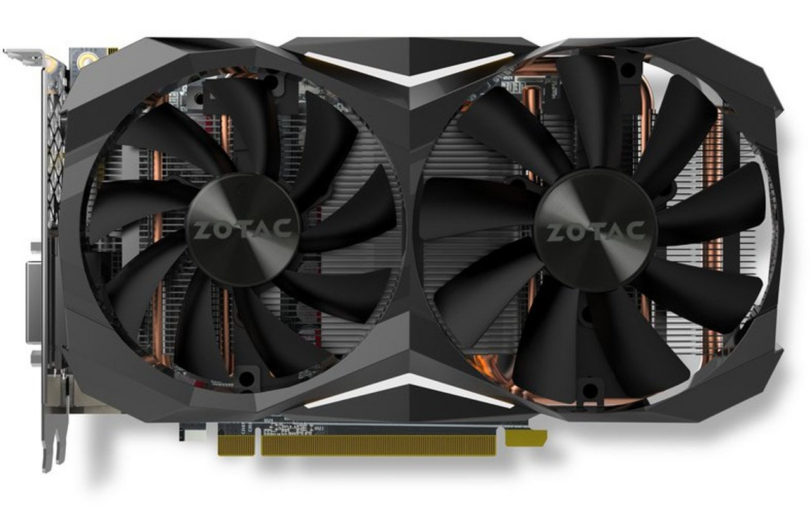
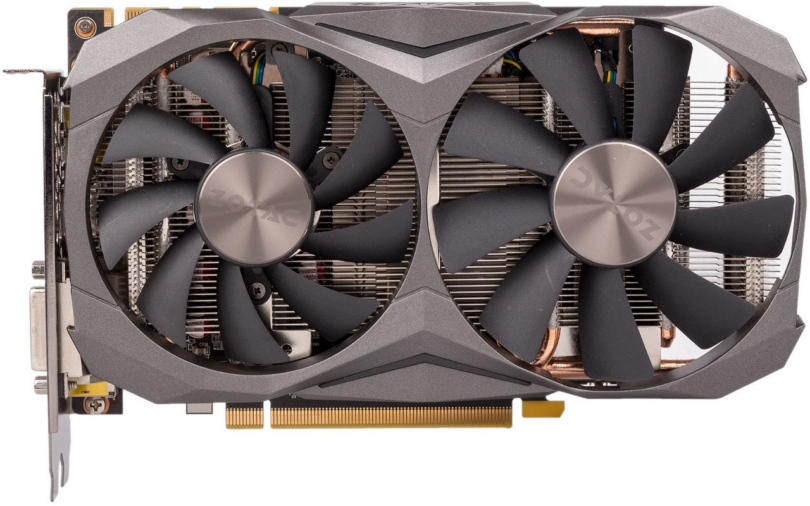
Note the height difference of the card in distance from the bracket top in the top left corner.
And we as the SFF community actually use the product images to figure out the size of the card, as in this exact example, figuring out how big the ZOTAC 1080 Mini is in comparison to the ZOTAC 1070 Mini.

This is an old example, but ZOTAC still uses renders of the cards in the product page galleries.
The problems don’t end with some vendors using renders to depict their cards incorrectly, which can obviously raise a red flag if there’s a render but no photos. There are also those who will use the wrong photos for the card. Here’s an example of RTX 4070 that looks like a reference-sized card in almost all of the photos on the product page:
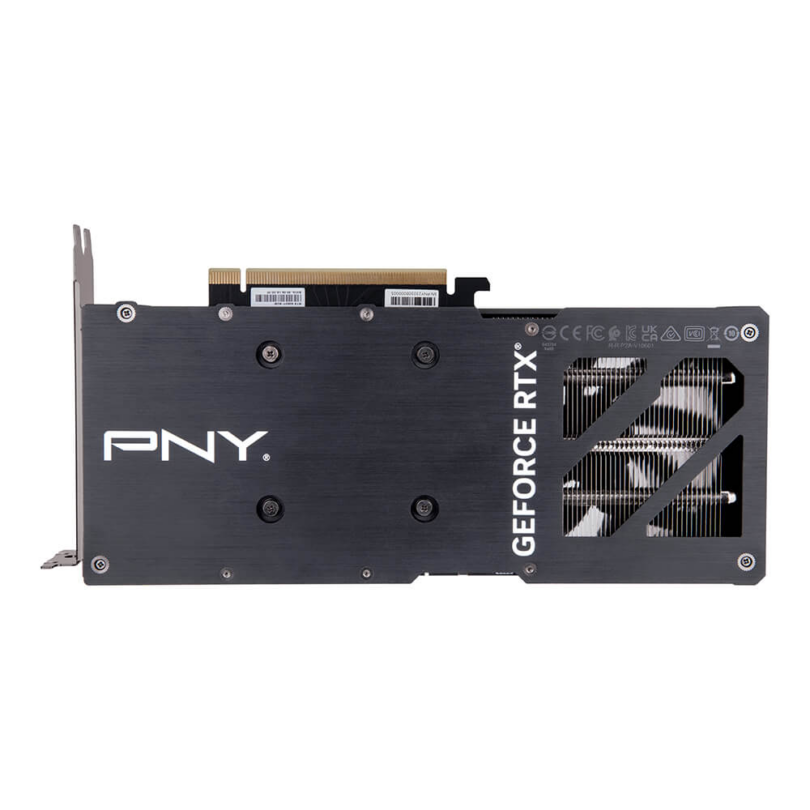
Keep in mind that there is a small 6mm gap between the top of the bracket and the top of the PCB or cooler.
Can you guess which depiction of the card here is actually the real one?
It’s the one on the render of the card’s product packaging in the background. All the other photos (even more on the product page) are representative of a lower-tiered card, most likely 4060/TI and not this 4070, and the card is actually not reference-sized but taller by 8mm; the dimensions in the specification are correct.
NVIDIA SFF Ready actually manages to make it worse
Do you remember the core of the problem being about consumers making informed decisions?
NVIDIA manages to make the problem even worse here by introducing separate dimensions for the cards and for the case space required when stating the SFF-Ready requirements:
Note how we don’t exactly know whether the card length includes the bent portion of the PCI bracket used for fastening the bracket with the screws to the chassis or not; the drawings are symbolic to look as clean as the graphics designer wanted and not precise to do the job of exactly explaining the requirements.
Why do the card length and space required inside the case differ by exactly 8 mm? The bent part of the PCI bracket sticks out from the card for around 11.5 mm, so a 12 mm difference could make more sense here.
Maybe the cases that participate in the program that have the inner space bigger than the hole in the side of the frame have exactly 4 mm stiffening bends on the frames, so both sides add up to the requirement of an additional 8 mm to fit the 304 mm card inside.
But again, we are not shown the full picture and reasoning here for the sake of cleaner-looking and simpler drawings that don’t do the proper job of explaining everything to the end user.
How it works against consumer’s informed decision
While trying to protect the user from mismatching the card with a too tight case, without a full explanation of why the case dimensions are bigger than the card dimensions, the SFF-Ready program is obscuring the choice of the consumer by limiting it to the cases that are at least the size of the specified case dimensions and graphic cards that are at most the specified card dimensions.
This means there will be situations where someone would want to choose a case that is explicitly designed around 12” long cards, so exactly 305 mm long, which should be enough length-wise for those 304 mm SFF-Ready cards, and yet he will be reluctant because of the case requirement for 312 mm of space in this direction for SFF-Ready cases, so he will go after something bigger, with the SFF-Ready badge.
“I would have bought that card or that case if I knew it fit beforehand.”
At some point, someone will actually test the tighter pairing to check that the SFF-Ready card fits in that smaller case or that a bigger card fits in the SFF-Ready case. This will prove that the SFF-Ready program doesn’t do a good job of resolving the problem of making an informed decision when you want to have an optimal match for the case; it only protects from complete mismatches of too big cards for too tight cases.
No self-certification for an open standard?
Head to our partners’ websites for further details about each of their SFF-ready cases.
The SFF-Ready cases will mostly be the ones from bigger vendors, while the boutique creators’ products will have it harder to compete against them for the casual consumer because it’s not an open program; there’s no info about the certification process, only a note about NVIDIA’s partners participating in the program.
Also, don’t forget about DIYers trying to make something unique on their own with 3D printing these days; the SFF-Ready program doesn’t make it any easier for them when trying to figure out if the specific card matches their project idea.
The space for the cable
Finally, the space required for the height of the card is significantly affected by the new 12VHPWR connector, but not all cards from the SFF-Ready list use the 12VHPWR connector; a lot of RTX 4070 cards still use the PEG 8-PIN connector, which can be used with a significantly smaller amount of space.
The RTX 4070 being a fairly powerful GPU for a casual gamer wanting to use it in an SFF case creates again the situation where the SFF-Ready certification begins working against the consumer’s informed decision for someone who could use a smaller case with the RTX 4070, but he doesn’t know that he can.
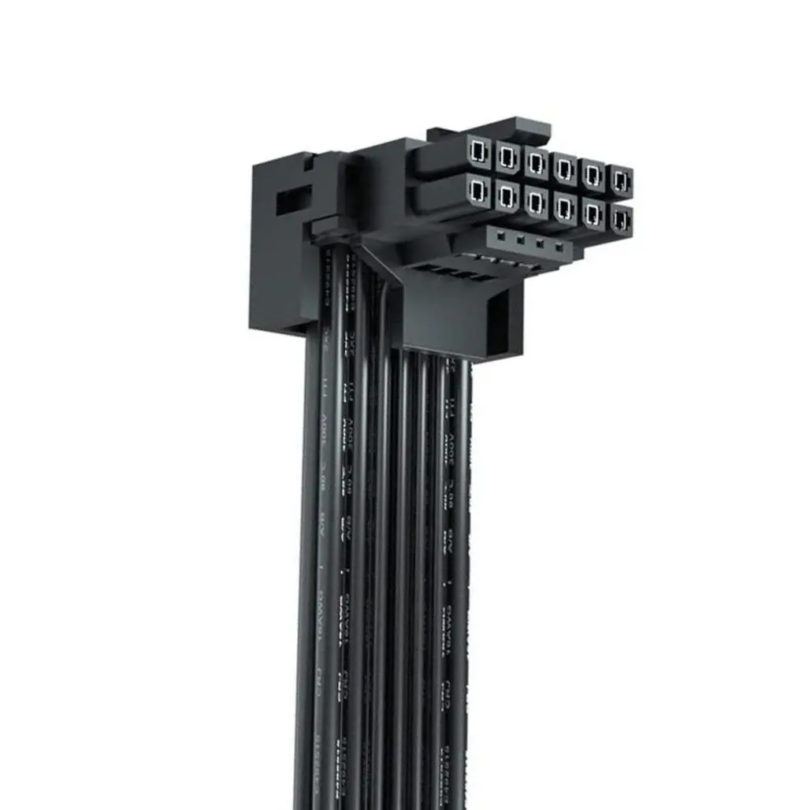
What adds even more to this are the angled cable connectors and adapters for the 12VHPWR that allow for either bigger cards within the same space of the SFF-Ready certified case or the same cards in cases that are not certified for SFF-Ready, creating the situation of “I would have bought that card or that case if I knew it fit beforehand,” so we’re back to the square one.
Cooler Master V850 Gold modular GPU power cable with angled 12VHPWR connector
So since angular connectors are already appearing, why not make certification of those and assume less space is required for the cards while using either PSUs with angular connectors or certified adapters?
The correct (and obvious) solution
Since consumers cannot be sure whether the measurements are right, how they were actually measured, or whether the photos are actually matching this version of the card, the obvious solution would be to go after the same solution as every other industry requiring to present exact dimensions of a product to the client: make a drawing of the product with dimensions marked on the product depiction exactly where they were measured.
So that’s what we actually need as a community of tinkerers building small and unique SFF systems: if you are selling a product in the ecosystem of PC parts, provide exact dimensions on a drawing and provide real-life photos depicting your product. If you don’t have photos yet, make sure to mark the images as placeholders that are not representative of the actual product.
If NVIDIA wanted to make it simpler to keep the approach of just three dimensions, it should enforce a specific way of measuring those three dimensions and present a drawing clearly showing from where to where each dimension should be measured. Only the cards and cases that adhere to the correct way of measuring the cards chosen by NVIDIA and include actual measurement drawings in the specification sheet would get the SFF-Ready or another “proper specification” approval stamp from NVIDIA.
In part two of this article, SaperPL will iterate on a SFF Friendly GPU design. Keep en eye out for this in the next week or two!


